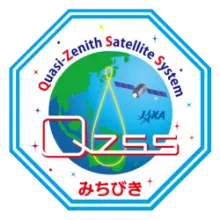Global Navigation Satellite System (GNSS) technology refers to a network of satellites providing signals from space that transmit positioning and timing data to GNSS receivers. These receivers then use this data to determine location. The most widely known GNSS is the United States' Global Positioning System (GPS), but other countries and regions have developed their own systems, such as Russia's GLONASS, the European Union's Galileo, and China's BeiDou.
GNSS technology functions by transmitting signals from satellites orbiting the Earth to GNSS receivers located on the Earth's surface. These receivers require signals from at least four satellites to accurately determine three-dimensional position (latitude, longitude, and altitude) and time. The system is based on a principle known as trilateration, which involves measuring the distance between the receiver and multiple satellites through the time it takes for the signals to reach the receiver.
Unlike other location technologies that require terrestrial landmarks or infrastructure, GNSS provides global coverage, offering positioning and timing information under all weather conditions anywhere on or near the Earth's surface.
GNSS Systems
The BeiDou Navigation Satellite System, also known as BDS, is a Chinese satellite navigation system. It is globally accessible and provides high-precision positioning, navigation, and timing services. The system operates with three types of satellites: Geostationary Orbit (GEO), Inclined Geosynchronous Orbit (IGSO), and Medium Earth Orbit (MEO) satellites. The system's architecture is divided into two parts: space and ground. The space segment consists of satellites in orbit, while the ground ...
The Galileo satellite system, developed and operated by the European Union, stands as a significant advancement in global navigation satellite systems (GNSS). This system offers worldwide coverage, delivering precise positioning and timing information. Galileo consists of 30 satellites, 24 of which are operational and 6 serve as active spares, all orbiting Earth at an altitude of approximately 23,222 kilometres. These satellites are distributed evenly across three circular Medium Earth Orbit ...
The GLONASS satellite system, a global navigation system from Russia, consists of 24 satellites orbiting Earth. This system is comparable to the GPS system from the United States. The satellites operate in three orbital planes, with eight satellites on each plane. The system covers the entire globe, providing real-time positioning and velocity data for various applications, including navigation and timekeeping. The GLONASS system operates at two frequency bands: L1 and L2. Signals at L1 ...
The Global Positioning System (GPS) is a satellite-based navigation system consisting of a network of 24 orbiting satellites. These satellites are approximately 20,180 kilometres above Earth's surface and make two complete orbits in less than 24 hours. They are built to last about 10 years, and replacements are constantly being built and launched into orbit. GPS receivers take this information and use triangulation to calculate the user's exact location. Essentially, the GPS receiver compares ...
NavIC, an acronym for Navigation with Indian Constellation, is an independent regional navigation satellite system developed by the Indian Space Research Organisation (ISRO). It is designed to provide accurate position information service to users within India and up to 1500 km from its boundary. The system utilises a constellation of seven satellites, three in geostationary orbit and four in geosynchronous orbit. This configuration ensures constant coverage of the entire Indian region ...
The Quasi-Zenith Satellite System (QZSS), often referred to as Michibiki, is a regional satellite navigation system centred on Japan. This system is designed to enhance the availability and accuracy of Global Positioning System (GPS) data, particularly in urban areas where buildings may obstruct signals from GPS satellites. The QZSS constellation consists of seven satellites, three of which are in highly inclined, slightly elliptical, geosynchronous orbits. These orbits ensure that at least ...





